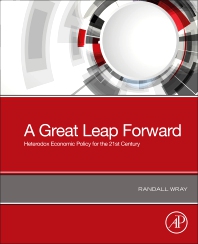
Publications
Working Paper No. 958
| June 2020
A Stock-Flow Consistent Quarterly Model of the Italian Economy
Macroeconomists and political officers need rigorous, albeit realistic, quantitative models to forecast the future paths and dynamics of some variables of interest while being able to evaluate the effects of alternative scenarios. At the heart of all these models lies a standard macroeconomic module that, depending on the degree of sophistication and the research questions to be answered, represents how the economy works. However, the complete absence of a realistic monetary framework, along with the abstraction of banks and more generally of real–financial interactions—not only in dynamic stochastic general equilibrium (DSGE) models but also in central banks’ structural econometric models—made it impossible to detect the rising financial fragility that led to the Great Recession.
In this paper, we show how to address the missing links between the real and financial sectors within a post-Keynesian framework, presenting a quarterly stock-flow consistent (SFC) structural model of the Italian economy. We set up the accounting structure of the sectoral transactions, describing our “transaction matrix” and “balance sheet matrix,” starting from the appropriate sectoral data sources. We then “close” all sectoral financial accounts, describe portfolio choices, and define the buffer stocks for each class of assets and sector in the model. We describe our estimation strategy, present the main stochastic equations, and, finally, discuss the main channels of transmissions in our model.
In this paper, we show how to address the missing links between the real and financial sectors within a post-Keynesian framework, presenting a quarterly stock-flow consistent (SFC) structural model of the Italian economy. We set up the accounting structure of the sectoral transactions, describing our “transaction matrix” and “balance sheet matrix,” starting from the appropriate sectoral data sources. We then “close” all sectoral financial accounts, describe portfolio choices, and define the buffer stocks for each class of assets and sector in the model. We describe our estimation strategy, present the main stochastic equations, and, finally, discuss the main channels of transmissions in our model.
Download:
Associated Program:
Author(s):
Related Topic(s):

